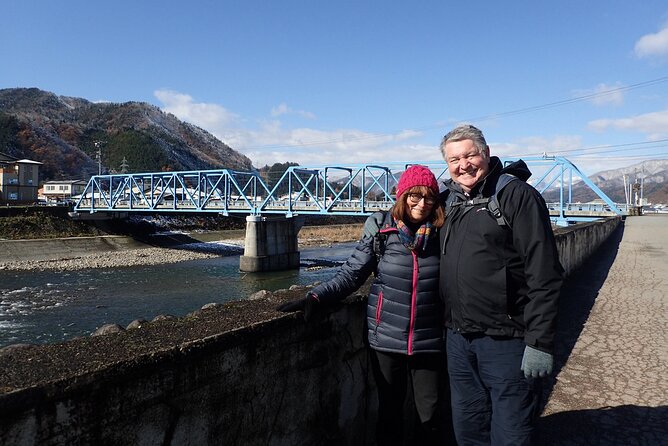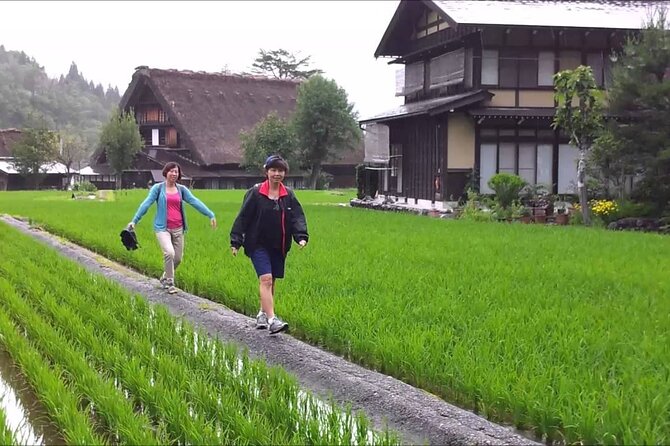In the Sekka Cotton Furoshiki Class, offered by the Kyoto Shibori Museum, participants have the opportunity to enjoy the art of dyeing a silk cotton furoshiki using the traditional sekka shibori method. This unique and engaging experience provides a personalized lesson, allowing participants to create their own unique patterns on the furoshiki.
As a souvenir, participants get to take home a beautiful cotton furoshiki that they have personally dyed. The class includes the admission fee to the museum, located southeast of Nijo castle in Kyoto. Confirmation will be received at the time of booking, and while the class is not wheelchair accessible, it is stroller accessible.
With its proximity to public transportation, this class is accessible to most travelers.
Quick Takeaways

- The Sekka Cotton Furoshiki Class offers an immersive and personalized experience.
- Participants will learn the sekka shibori method, a technique for creating unique patterns on furoshiki.
- The class provides a private lesson with individual attention and guidance from the instructor.
- Participants will leave the class with a personally dyed cotton furoshiki, a traditional Japanese wrapping cloth.
Class Overview and Experience
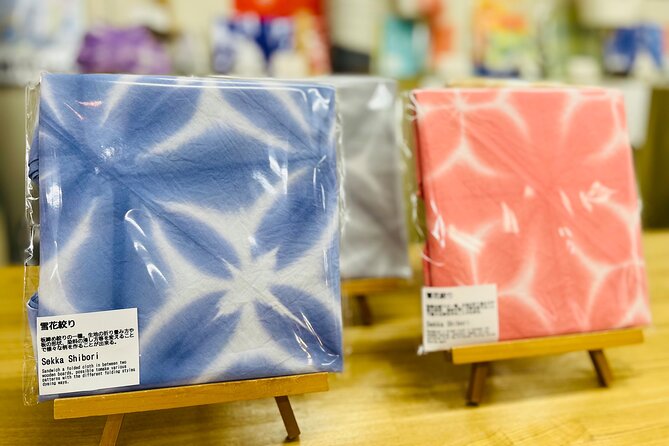
The class offers an immersive and personalized experience in learning the art of dyeing a silk cotton furoshiki using the sekka shibori technique at the Kyoto Shibori Museum.
Participants will have the opportunity to create unique patterns on the fabric using this traditional Japanese handcraft technique.
The class is designed to provide a hands-on learning experience, allowing participants to fully enjoy the art of dyeing.
With a private lesson format, each participant receives individual attention and guidance from the instructor, ensuring a personalized and tailored learning experience.
Learn the Sekka Shibori Method
Participants in the Sekka Cotton Furoshiki Class at the Kyoto Shibori Museum learn the intricate and mesmerizing art of the sekka shibori method. This method involves creating unique patterns on the fabric by folding, twisting, and binding it before dyeing. The patterns are inspired by nature and can range from delicate flowers to bold geometric shapes.
The sekka shibori variations allow for endless possibilities, making each furoshiki truly one-of-a-kind. Furoshiki, a traditional Japanese wrapping cloth, has a long history dating back to the Nara period. Originally used to wrap and carry items, furoshiki has since become a versatile accessory, used for gift wrapping, decoration, and even fashion.
Private Lesson for Personalized Experience
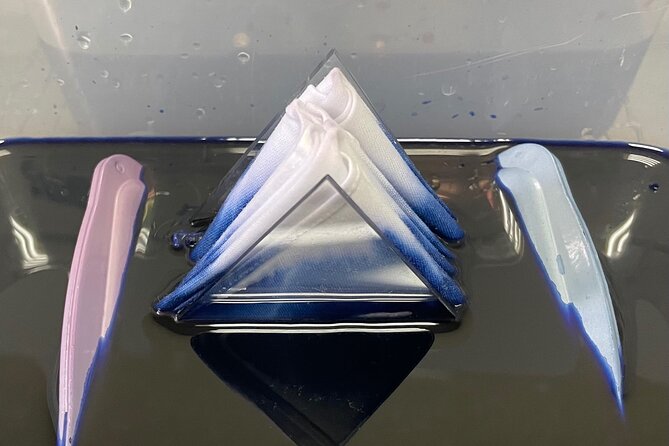
During the private lesson, you will receive personalized instruction in the art of sekka shibori and create their own unique patterns on the cotton furoshiki. This customized instruction allows individuals to delve deeper into the traditional silk dyeing technique and explore their creativity. The private lesson offers a one-on-one experience with an experienced instructor who will guide participants through the process step-by-step. With the instructor’s expertise and guidance, you will learn the intricacies of sekka shibori and how to achieve stunning patterns on the cotton fabric. This personalized experience ensures that each participant can fully enjoy the art form and create a furoshiki that is truly their own. The table below provides a visual representation of the private lesson experience:
| Private Lesson for Personalized Experience | ||
|---|---|---|
| Individualized Instruction | Experienced Instructor | Step-by-Step Guidance |
| Exploration of Traditional Silk Dyeing | Creativity and Artistic Expression | In-depth Learning Experience |
| Unique Patterns on Cotton Furoshiki | Personalized and Customized Designs | Hands-on Practice |
| One-on-One Interaction | Immersive and Engaging | Tailored to Individual Needs |
Immerse Yourself in Japanese Handcraft Techniques

As participants delve into the art of sekka shibori during the private lesson, they can truly enjoy a hands-on exploration of various Japanese handcraft techniques. Learning these traditional techniques offers several benefits, including the opportunity to connect with Japan’s rich cultural heritage and develop a deeper understanding of its artistic traditions.
One particular handcraft technique that holds great significance in Japanese culture is furoshiki, a traditional wrapping cloth used for various purposes such as gift wrapping, carrying items, and even as a fashion accessory. By learning Japanese handcraft techniques, participants not only gain practical skills but also gain a deeper appreciation for the cultural and historical significance of furoshiki.
It allows them to engage with the country’s traditions and carry them forward in their own lives.
Leave With a Beautiful Cotton Furoshiki
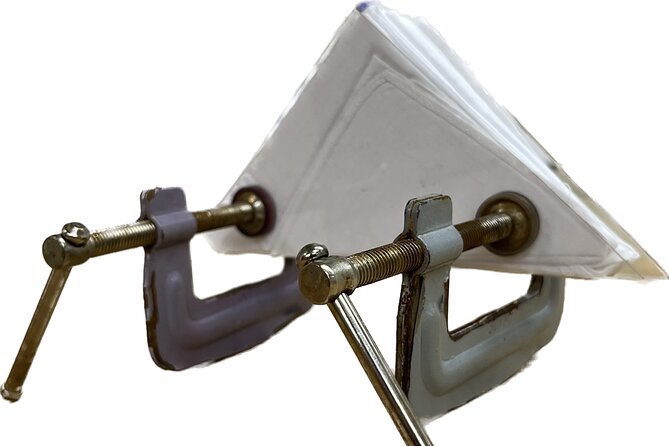
Upon completing the private lesson on sekka shibori and seeing Japanese handcraft techniques, you will be able to leave with a beautiful cotton furoshiki as a tangible reminder of their experience.
The furoshiki, a traditional Japanese wrapping cloth, isn’t only practical but also a work of art. With the knowledge gained from the class, participants can explore various furoshiki design ideas to create their own unique and personalized pieces. Whether it’s using traditional patterns or experimenting with modern designs, the possibilities are endless.
The cotton furoshiki can be used for wrapping gifts, carrying items, or even as a decorative wall hanging. It also makes for a thoughtful and unique gift idea, showcasing the beauty of Japanese craftsmanship and culture.
Inclusions: Admission Fee to the Museum
The class includes the admission fee to the Kyoto Shibori Museum. Here are a few discussion ideas regarding the importance of the admission fee and the benefits of including a museum visit:
- Gain access to the Kyoto Shibori Museum, a renowned institution dedicated to preserving and showcasing the art of Japanese textile dyeing.
- Explore the museum’s extensive collection of traditional and contemporary shibori pieces, providing inspiration and insight into the rich history and techniques of this craft.
- Witness live demonstrations and workshops conducted by skilled artisans, offering a deeper understanding of the intricate processes involved in creating these beautiful textiles.
- Engage with knowledgeable museum staff who can provide valuable information and answer any questions you may have about shibori and its cultural significance.
- Enjoy the vibrant atmosphere of the museum, surrounded by stunning displays and exhibits that celebrate the beauty and creativity of Japanese textile art.
Meeting and Pickup Details
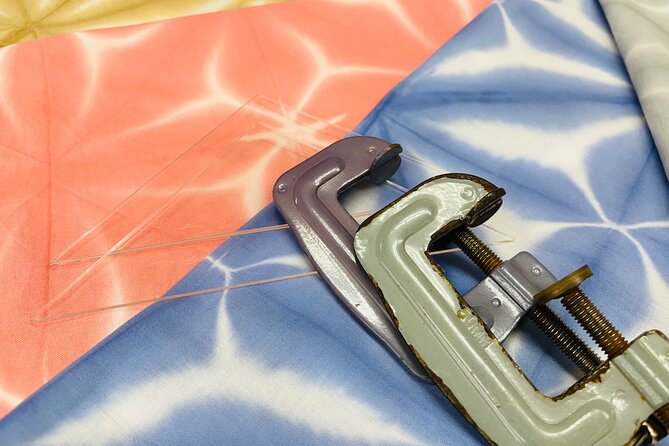
The meeting and pickup details for the Sekka Cotton Furoshiki Class can be found below.
The meeting point for the class is the Kyoto Shibori Museum, located at 135-5 Shikiamichō, Nakagyo Ward, Kyoto, Japan. It’s conveniently situated southeast of Nijo castle, just a 5-minute walk away. Participants will gather at this location and the class will also end here.
As for transportation options, the museum is easily accessible by public transportation. Travelers can reach the meeting point using various modes of transportation, such as buses or trains.
It’s important to note that the class isn’t wheelchair accessible, but strollers can be accommodated. Participants should plan accordingly and ensure they arrive at the designated meeting point on time.
Expectations and Accessibility Information
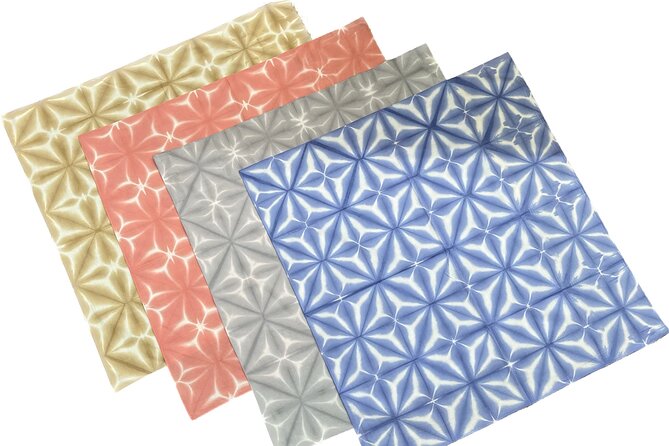
Participants can expect a confirmation of their booking for the Sekka Cotton Furoshiki Class, along with information about accessibility for the activity. Here is what they can anticipate:
- Not wheelchair accessible: Unfortunately, the venue doesn’t have wheelchair access.
- Stroller accessible: Participants with strollers will be able to navigate the venue easily.
- Near public transportation: The Kyoto Shibori Museum is conveniently located near public transportation, making it easily accessible for all.
- Most travelers can participate: The class is suitable for most individuals, regardless of age or skill level.
- Confirmation and cancellation policy: Participants will receive a confirmation upon booking, and cancellation is possible up to 24 hours in advance for a full refund.
With these accessibility and transportation details in mind, participants can plan their visit to the Sekka Cotton Furoshiki Class with ease.
Frequently Asked Questions
How Long Does the ‘Sekka Cotton Furoshiki Class’ Typically Last?
The length of the class may vary, but typically the Sekka Cotton Furoshiki Class lasts around 2 hours. The class schedule allows for a personalized experience, ensuring participants have enough time to learn and create their own unique patterns.
Can Children Participate in the Class?
Yes, children can participate in the class. There are no age restrictions mentioned. It’s a great opportunity for them to learn about traditional Japanese handcraft techniques and create their own unique patterns.
Is the Furoshiki Dyeing Process Messy or Does It Require Any Special Clothing?
The furoshiki dyeing process can be messy, so it is recommended to wear clothing that you don’t mind getting stained. It’s best to wear something comfortable and easy to move in during the class.
Is There a Limit to the Number of Patterns or Designs That Can Be Created Using the Sekka Shibori Method?
There are no limitations to the number of patterns or designs that can be created using the sekka shibori method. However, for those interested in exploring alternative dyeing techniques, the class offers a personalized experience to learn and experiment.
Are There Any Additional Fees or Costs Associated With the Class, Besides the Admission Fee to the Museum?
There are no additional fees or costs associated with the class, besides the admission fee to the museum. Participants can enjoy the full experience of learning furoshiki wrapping techniques without any extra charges.
The Sum Up
To sum it up, the Sekka Cotton Furoshiki Class offered by the Kyoto Shibori Museum is a unique and immersive experience that allows participants to learn the traditional Japanese handcraft technique of sekka shibori.
With a private lesson, attendees can personalize their furoshiki and take home a beautiful cotton souvenir.
The class includes the museum admission fee and is accessible to most travelers. Confirmations are provided upon booking, and while the class isn’t wheelchair accessible, it’s stroller accessible.
Don’t miss this opportunity to learn about Japanese culture and create your own unique furoshiki design.


![[Narita Airport Terminals , ] km Sawara Itako Historic Bike Tour Tour Overview](https://tokyo-top-guide.com/wp-content/uploads/1_narita-airport-terminals-1-2-40-60km-sawara-itako-historic-bike-tour.jpg)

